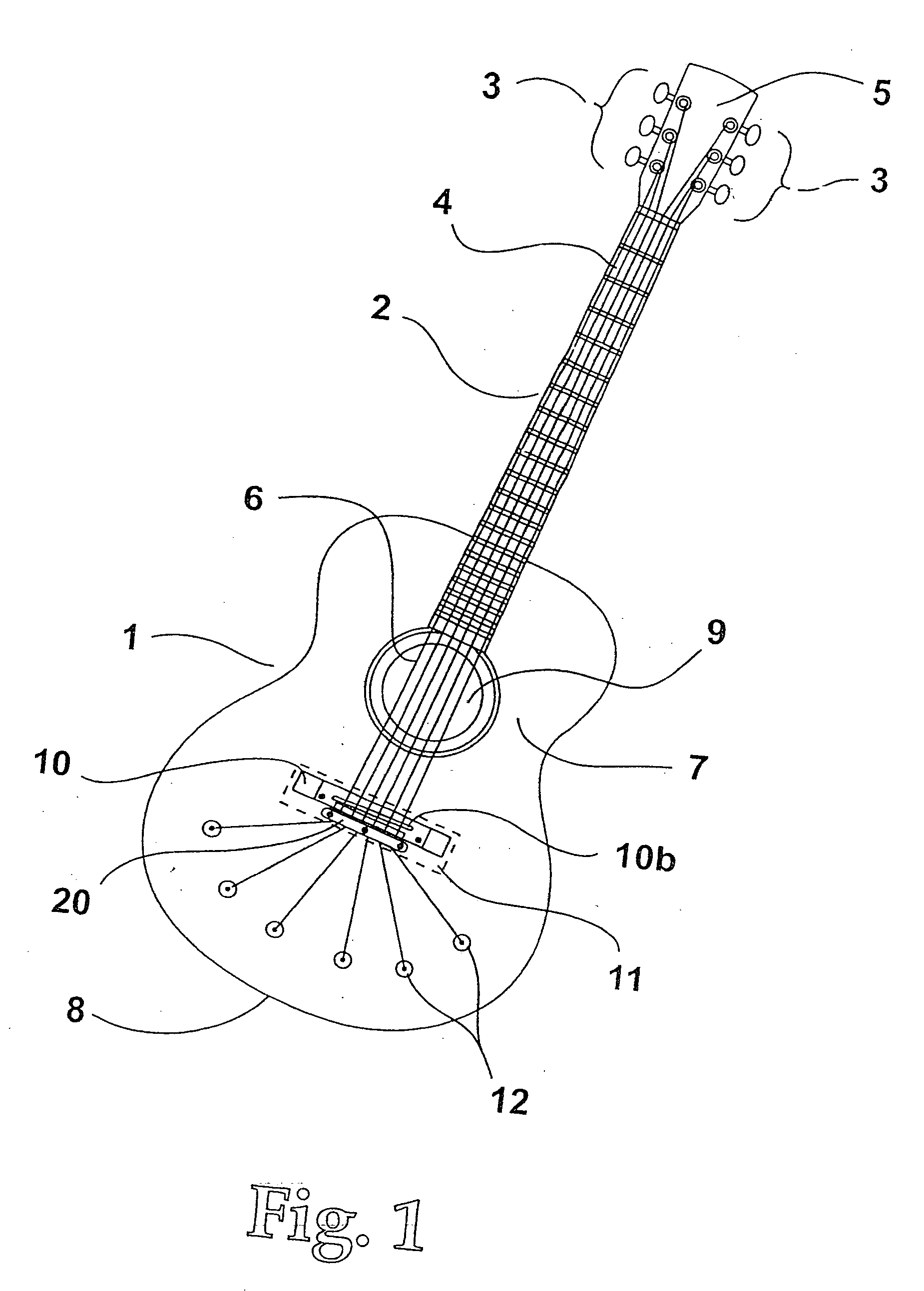String instrument
a string instrument and string technology, applied in stringed musical instruments, musical instruments, guitars, etc., can solve the problems of pin and/or string disengagement from the bridge, structurally invasive to the bridge itself, and unreliable bridge pins, etc., and achieve the effect of greater resonan
- Summary
- Abstract
- Description
- Claims
- Application Information
AI Technical Summary
Benefits of technology
Problems solved by technology
Method used
Image
Examples
Embodiment Construction
[0038] For a more complete understanding of the invention, as well as other objects and further features thereof, reference may be had to the following detailed description of the invention in conjunction with the drawings wherein:
[0039]FIG. 1. shows a hollow body acoustic guitar 1 made preferably of wood, which is connected to a neck 2 assembly. The neck is made of wood or a related material, which is suitable to withstand continual string pull without warping or twisting. The neck has a headstock 5, which holds the tuning pegs 3, which in turn hold the strings 6. The strings are strung at a substantial tension and extend from the fixed point created at the guitar neck to the lower string contacting means. The neck is mated with a fretboard 4 which is made of a hard substance such as rosewood, ebony, or a re-enforced polymer. The material should be strong enough and stable enough to hold metal frets and withstand playing wear. The soundboard 7 which can be made of a known tonewood...
PUM
 Login to View More
Login to View More Abstract
Description
Claims
Application Information
 Login to View More
Login to View More - R&D
- Intellectual Property
- Life Sciences
- Materials
- Tech Scout
- Unparalleled Data Quality
- Higher Quality Content
- 60% Fewer Hallucinations
Browse by: Latest US Patents, China's latest patents, Technical Efficacy Thesaurus, Application Domain, Technology Topic, Popular Technical Reports.
© 2025 PatSnap. All rights reserved.Legal|Privacy policy|Modern Slavery Act Transparency Statement|Sitemap|About US| Contact US: help@patsnap.com



